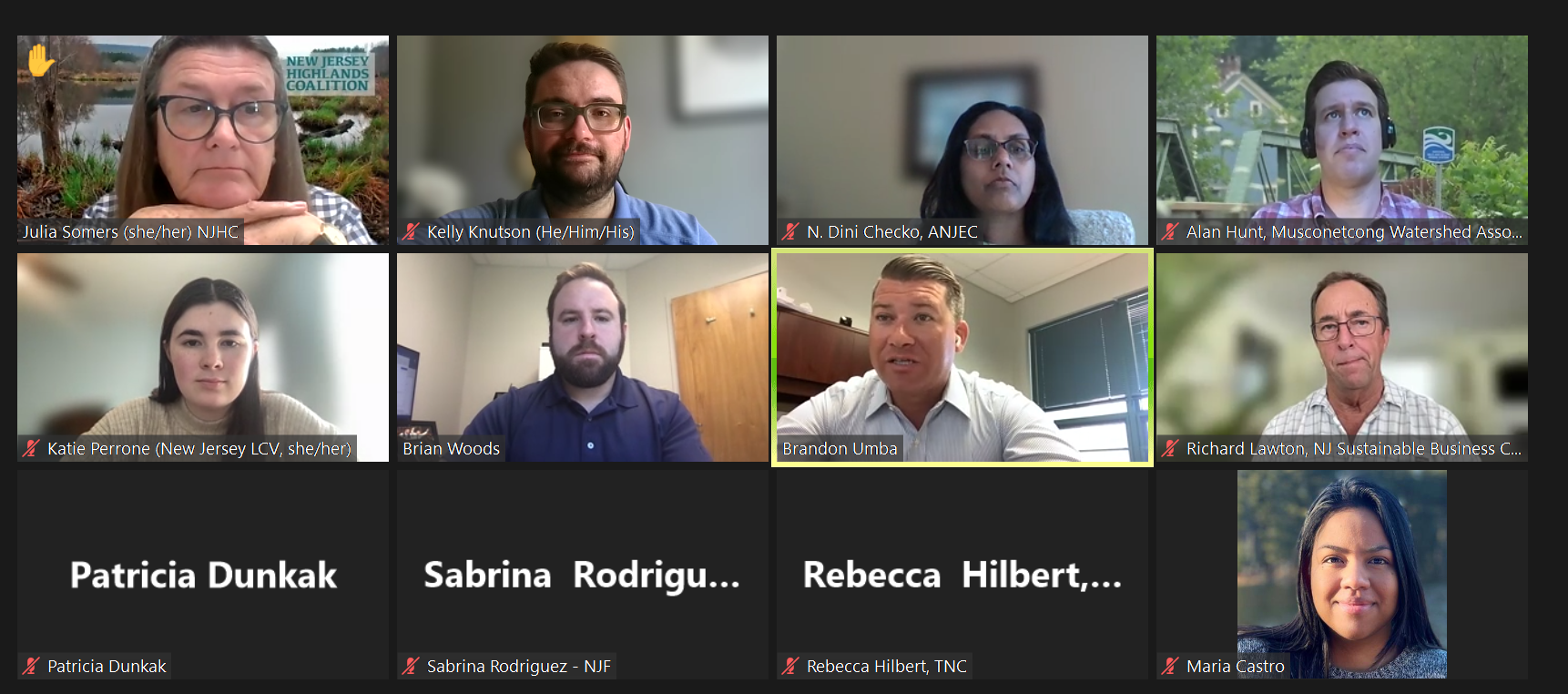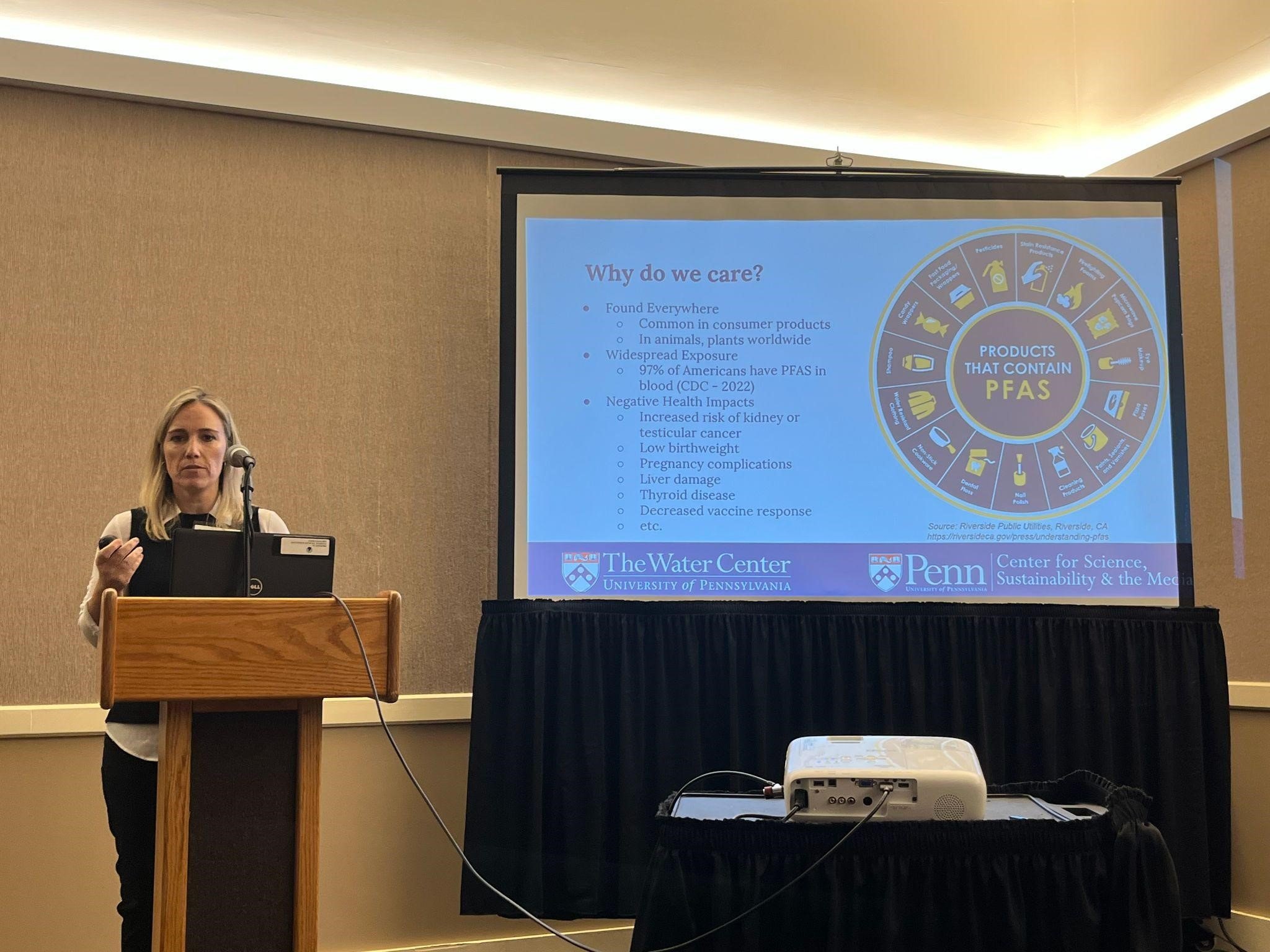By: Katie Perrone, Policy Assistant at New Jersey League of Conservation Voters and NJ State Lead for CDRW
CDRW’s New Jersey members have been busy the last couple of months. We had the opportunity to hear from both the Department of Environmental Protection and NJ Assemblyman Brandon Umba about ongoing efforts to address the impact of PFAS in New Jersey waterways.
PFAS, short for per- and polyfluoroalkyl substances, are manmade chemical toxins that pose a significant threat to public health, water quality and wildlife. PFAS have been linked to severe human health impacts, including cancer. These substances are present in many of the products that we use in our everyday lives and they have been found virtually everywhere, from the Arctic to the Delaware River.
One major way that we are exposed to PFAS is through our drinking water. In 2018, New Jersey was the first state to adopt a PFAS maximum contaminant level (MCL). Municipalities in New Jersey are required to monitor and report PFAS levels in their drinking water supply that exceed the MCL set by the New Jersey Department of Environmental Protection (DEP).
Setting a MCL was an important step to understanding and regulating PFAS in our drinking water, but there is still much more that needs to be done to address the danger that PFAS poses to our communities. CDRW’s New Jersey members have been considering additional regulatory and legislative approaches that our state can take, and we spent the last couple of months learning from local decision-makers about their ideas.
PFAS life-cycle infographic by NJDEP
REGULATORY APPROACHES
In August, we were joined by officials from the DEP to discuss the recent settlement the agency reached with Solvay Specialty Polymers USA, LLC to clean up PFAS and other hazardous substances that were released from their West Deptford facility and spread into surrounding waterways.
NJ Assemblyman Brandon Umba meeting with NJ CDRW Members
The Deputy Commissioner and Chief Advisor of the DEP, Sean Moriarty and Paul Stofa respectively, reviewed the components of the settlement that DEP had reached with Solvay. The settlement would require Solvay to pay $392.7 million for cleaning up areas surrounding the West Deptford facility, compensating the public for natural resource damages and funding additional PFAS remediation efforts.
We were pleased to hear from the DEP about additional actions that they are taking to address this critical issue. DEP has been working to identify specific standards for alternative PFAS, since we currently only have MCLs for a few of the thousands of different types of PFAS.
Many fire departments currently use Aqueous Film Forming Foam (AFFF), which includes high concentrations of PFAS, so the agency is also hoping to reinstate an AFFF takeback program. DEP also expects the federal Environmental Protection Agency to finalize new national PFAS standards that go beyond the MCLs set by DEP.
LEGISLATIVE APPROACHES
In order to build off of the important conversation that we had with DEP, we invited Assemblyman Brandon Umba (LD-08) to our September member meeting. Assemblyman Umba spoke about his outlook on addressing PFAS through the legislative process and discussed his experience serving as the business administrator in West Deptford, the town where Solvay’s chemical facility is located.
Assemblyman Umba stressed the importance of educating the public and connecting local officials with experts. Local municipalities are being left without the proper education and resources to understand the health impacts of PFAS and communicate with residents about this issue.
The Assemblyman urged us to work together to increase public awareness by sharing stories we are hearing from those in our communities that have been affected. As environmental advocates, we can serve an important role in uplifting the stories of those who have been directly impacted by PFAS contamination.
NEXT STEPS
We know that the prevalent threat of PFAS requires strong, coordinated action by all levels of government. Learning about regulatory and legislative approaches for addressing this critical issue allowed our group to consider our next steps in advocating for effective solutions.
Brianne Callahan, Senior Research Manager at the Water Center of the University of Pennsylvania, speaking at the CDRW annual forum about challenges and lessons learned from addressing PFAS
As advocates representing the people, wildlife and waterways that make up the Delaware River Watershed, we have an important role to play in the solution. One pivotal step that we can take is ensuring that our perspective is considered by decision-makers.
Following our meeting with DEP, a group of NJ CDRW members submitted joint comments to DEP in response to the Solvay settlement agreement. We commended DEP’s work to hold Solvay to account for the contamination they have caused in our precious waterways but also urged the agency to continue this urgent work by following through with their commitments, such as reinstating an AFFF takeback program.
Additionally, we have a crucial role to play as educators. Last month, I had the opportunity to attend the CDRW annual forum in Wilmington, Delaware and learn from experts from all across the watershed. On the last day of the forum, I attended a PFAS workshop about challenges and lessons learned from those who have dealt with PFAS contamination in their communities. It struck me that all of the states within the watershed are facing similar challenges in regards to PFAS contamination.
There is an opportunity for us to utilize CDRW’s vast and experienced network of advocates and experts to work together and learn from one another. We have a responsibility to ourselves and the communities that we serve to spread awareness of this important issue and to ensure that the voices of residents who are directly impacted are heard by those in positions of power.
We know that this work cannot stop now. We can build on this momentum to continue to educate ourselves and others about the dangers that PFAS pose to our communities and build towards strong and equitable solutions that protect the residents, wildlife and natural resources that make up the watershed.



